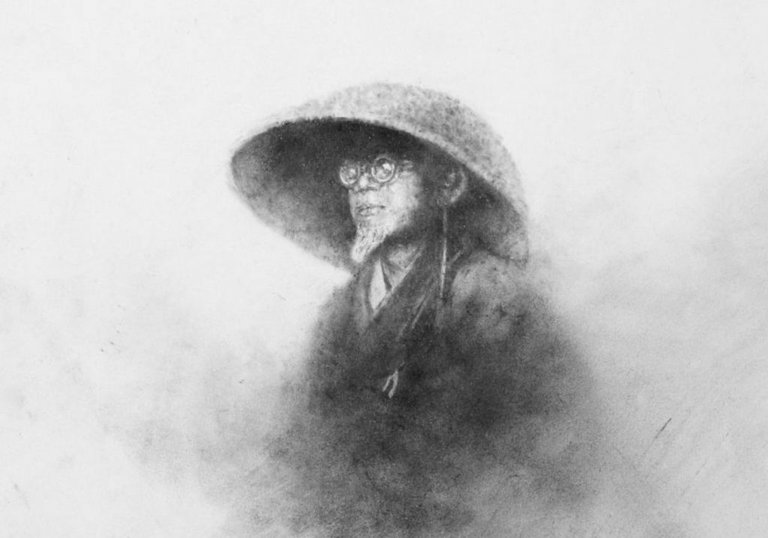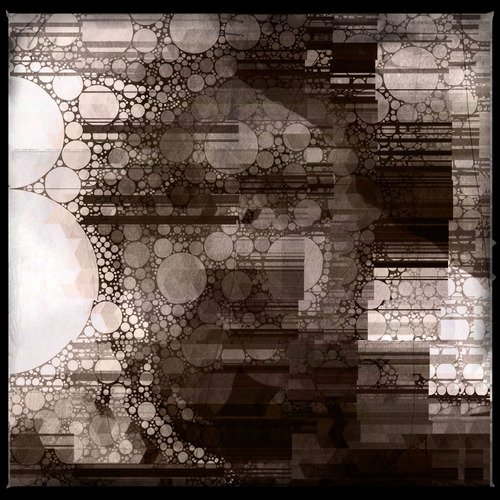How Much Longer ~ Haiku of Japan
In 1932, Santōka was on the move again, in another of his long journeys across Japan on foot. While on his travel, he paused to write this haiku.
itsu made tabi suru koto no tsume o kiru
my traveling?
cutting my nails
—Santōka


Santōka wrote this haiku at Yobuko Port, one of the many stops on his lifelong wandering. Yobuko is a small fishing port in Saga Prefecture, on the northwestern coast of Kyushu, famous for its squid and isolated seaside beauty.
He composed the poem near the end of an especially difficult period, set off by his dismissal as jūshoku (head priest) of Hōon-ji temple in Kumamoto due to his excessive drinking. That loss of stability deepened his guilt, and with it, his depression and alcoholism. He had almost no income, survived by begging, and often slept in roadside huts that cost just a sen or two[1]—or simply under trees and in abandoned ruins. At one point during this stretch, he described lying drunk in a graveyard, soaked by rain.
Yet despite the suffering, this era became a kind of artistic and spiritual peak, producing work of raw honesty and minimalist power. Perhaps that’s why he included this poem in his major 1932 collection 『草木塔』 (Sōmoku-tō, “Grass and Tree Cairn”).
Blyth, in his commentary on this haiku, read it through a Buddhist lens. He suggested Santōka was making a statement about the solitary journey of life, how even in the midst of that journey, we must still pause for mundane things like cutting our toenails. While Santōka may have agreed with that sentiment, he was likely writing more simply, more specifically, about his own current travel.
That was very much his style: open with something that feels profound—how much longer must I travel?—then pivot to something grounded—I cut my nails.
Of course there is Zen in that, even if not quite the Zen Blyth was looking for. Many Zen tales and kōan include these same pivots. The logic breaks down, sometimes even becoming nonsensical, as a way of knocking us out of our thoughts and pointing us more toward seeing Reality directly. The stereotypical satori (enlightenment) moment.
It’s doubtful Santōka was trying for that, at least not consciously. But the pattern is there. And perhaps that’s the secret of his best work: he never tries to be profound, yet often is.
Born in 1882 in Yamaguchi Prefecture, Santōka began writing haiku in his youth but struggled with personal hardships, including family tragedy and alcoholism. Initially influenced by traditional haiku, he later broke from convention under the guidance of Ogiwara Seisensui, embracing free-form haiku and Zen-infused wandering. Ordained as a Zen priest in 1925, Santōka spent his later years traveling on foot across Japan, composing deeply introspective poems rooted in daily experience. His raw, minimalist style gained posthumous acclaim, and he remains one of the most beloved modern haiku poets in Japan. He died in 1940 in Matsuyama.
-
The sen was 1/100 of a yen, and at the time, roughly equivalent in value to a US cent. In the same era, you could also find rundown flophouses in the US for just a few cents a night, so this was not uniquely Japanese. ↩
❦
 |
David is an American teacher and translator lost in Japan, trying to capture the beauty of this country one photo at a time and searching for the perfect haiku. He blogs here and at laspina.org. Write him on Mastodon. |
You received an upvote of 100% from Precious the Silver Mermaid!
Please remember to contribute great content to the #SilverGoldStackers tag to create another Precious Gem.
I'm just trying to wrap my head around how people cut their toenails back in the day before they had all the fancy tools we have today.
It wasn't that long ago. I'm pretty sure they had the same pinch type nailcutters we use now back in the 1920s. As to before that, I'd guess some crude form of the scissor type nailcutters
Yeah, I guess so!
It reminds me of a passage I read in a novel, the character's world was slowly crumbling around her, and her only thought was, "I just need to keep moving. I just need to keep filling my time so that I don't need to face my reality right now, not to feel.
I felt this while reading Santoka's poem... I can imagine one's travels back then would be painful and perilous, yet he found ways to stay grounded. Even taking the moment to write the poem itself was a reflection of this attitude
I think that was a large part of it. Stay in the moment; don't look at how terrible life is right now.
Very interesting account!
Any idea, what place would be best to spend some time learning & discussing about zen kōans through the Buddhist lens (among English speaking people)? 🤔
On Reddit maybe? You aren't likely to find many posts discussing Zen kōans here. I post about Zen here and there, but I've never seen anyone else on Hive do so.